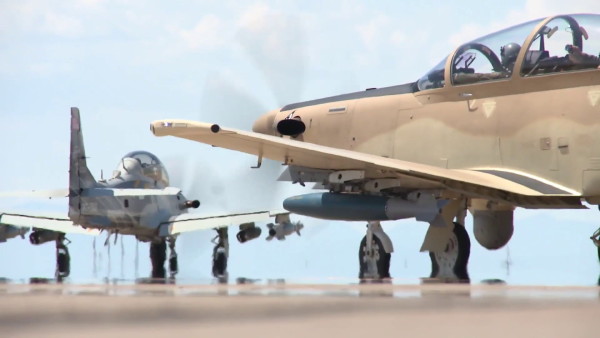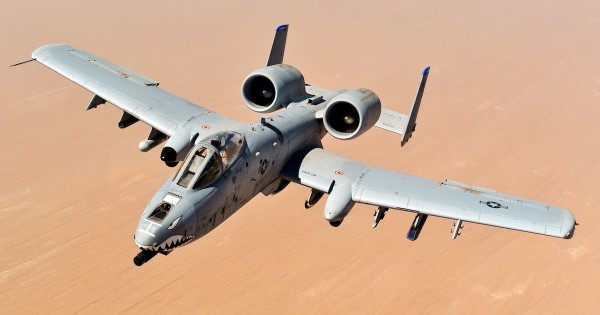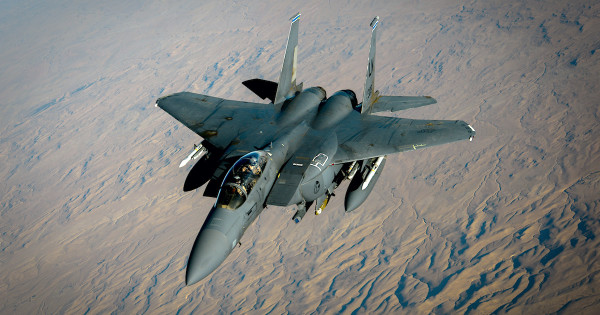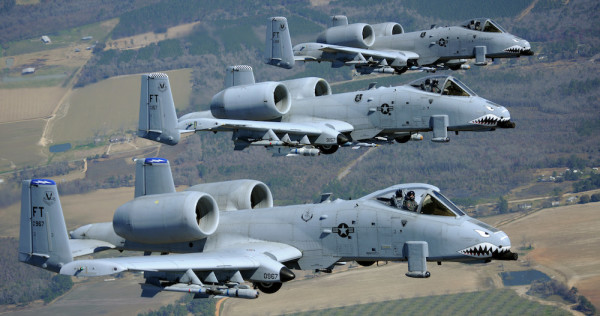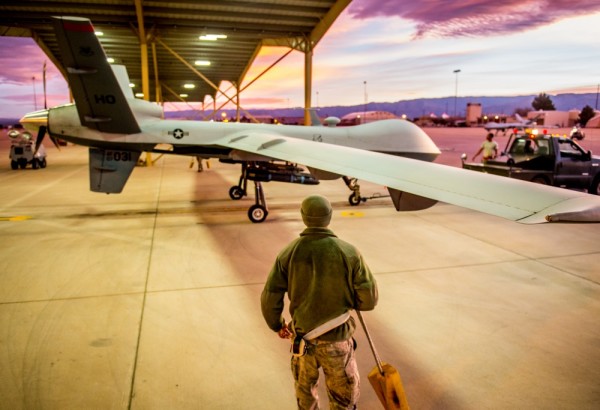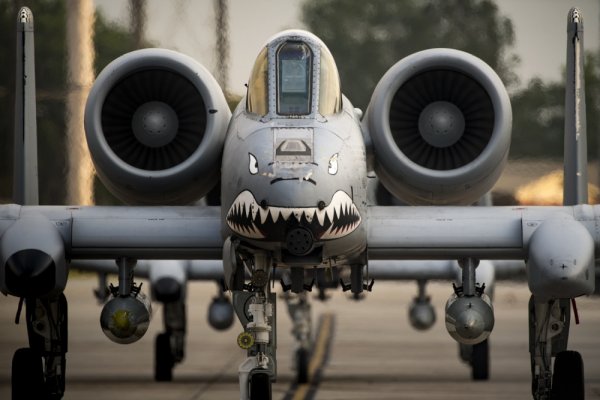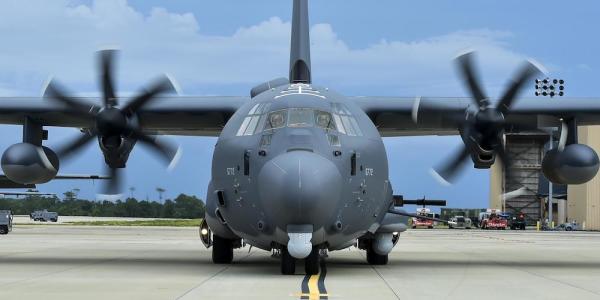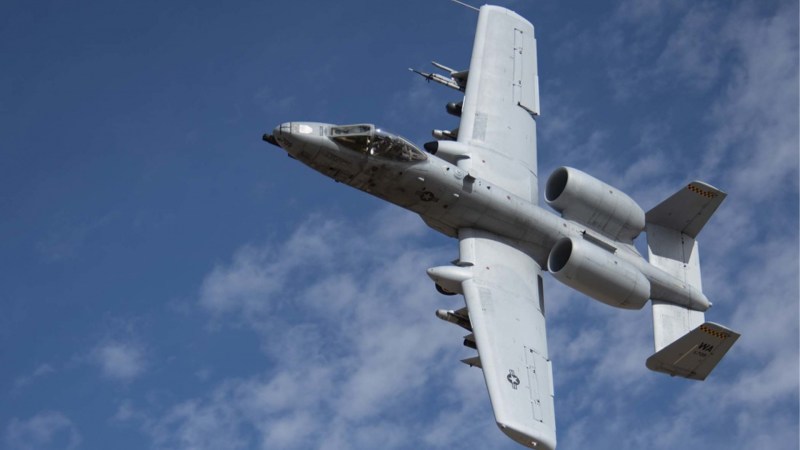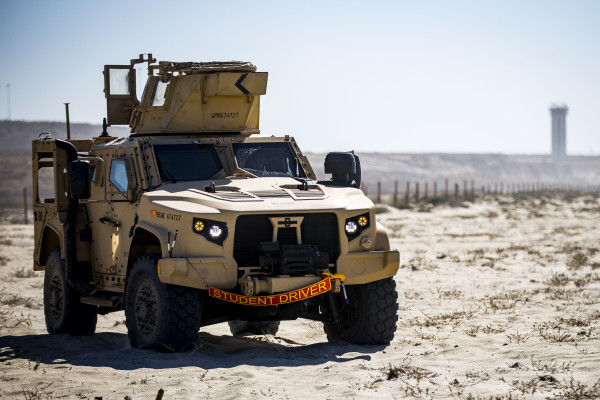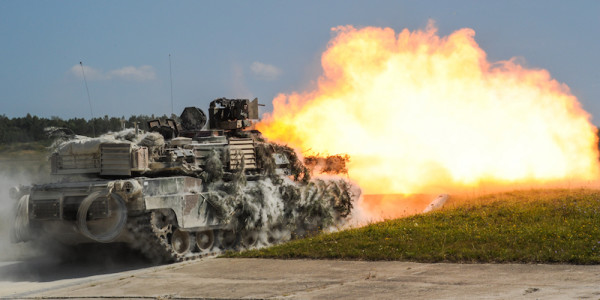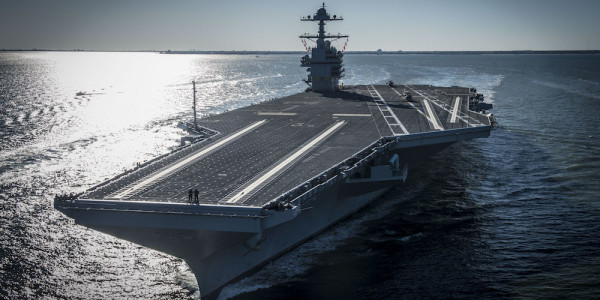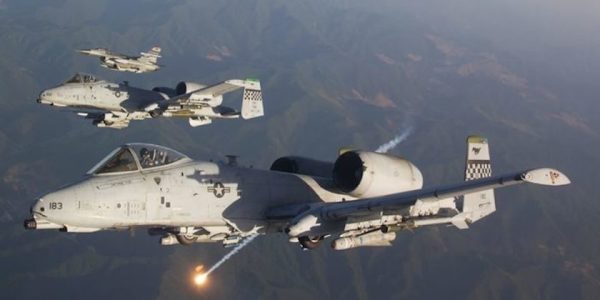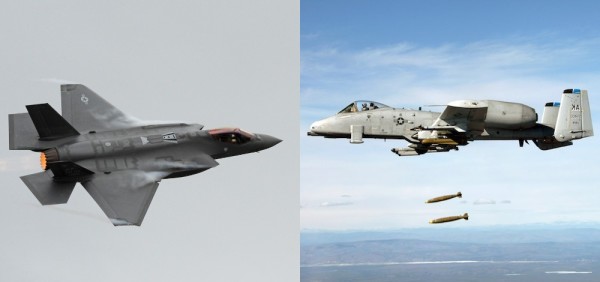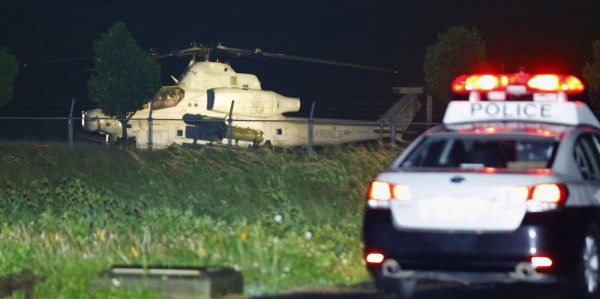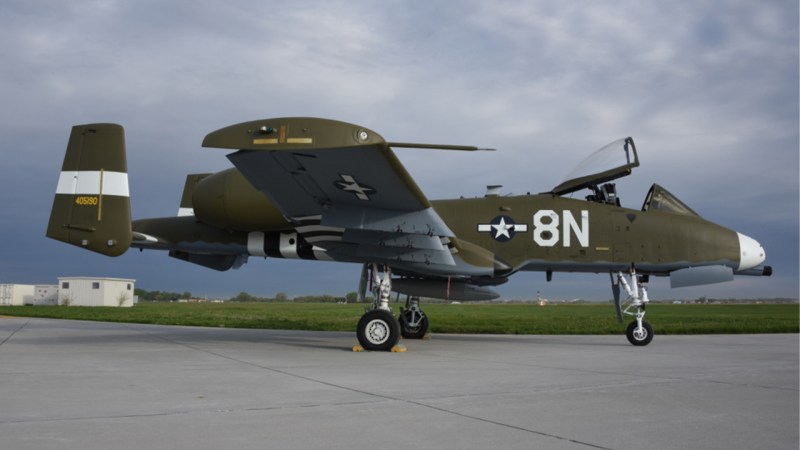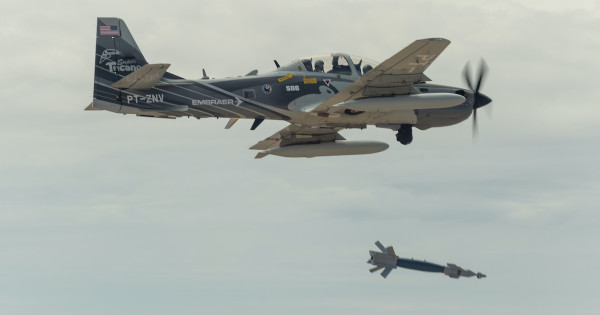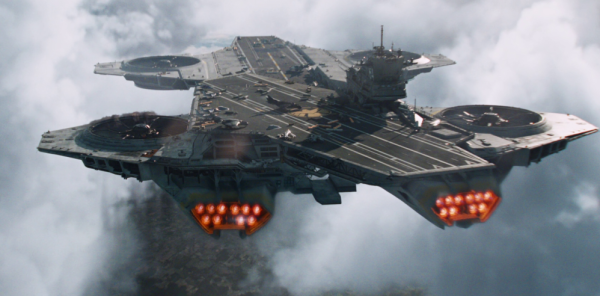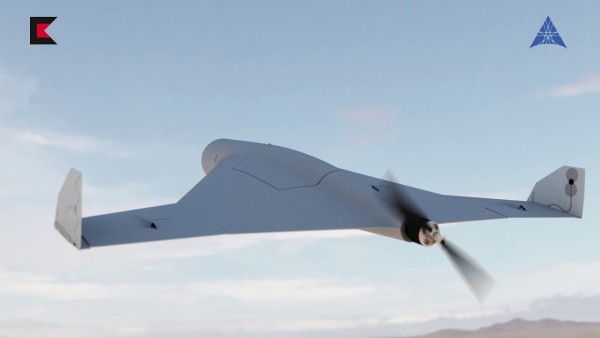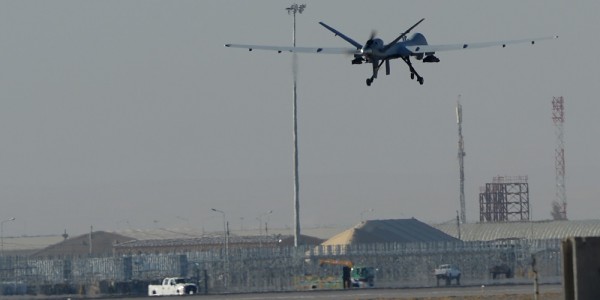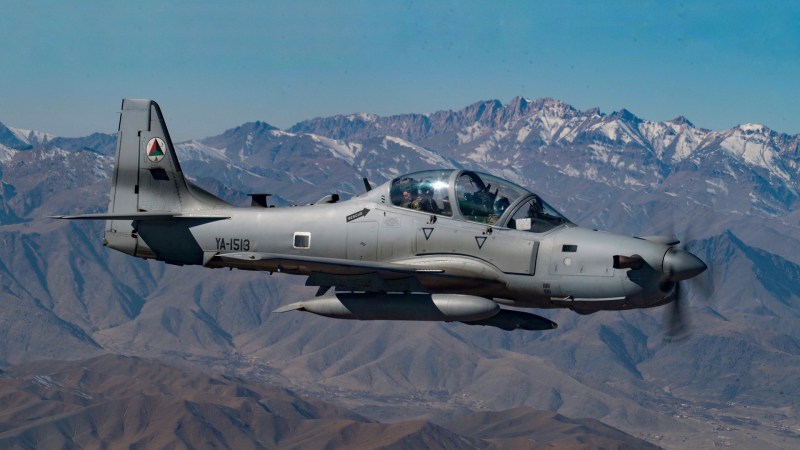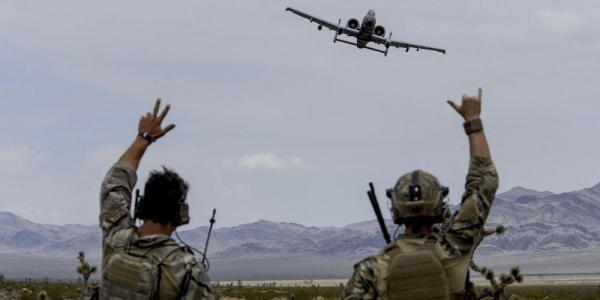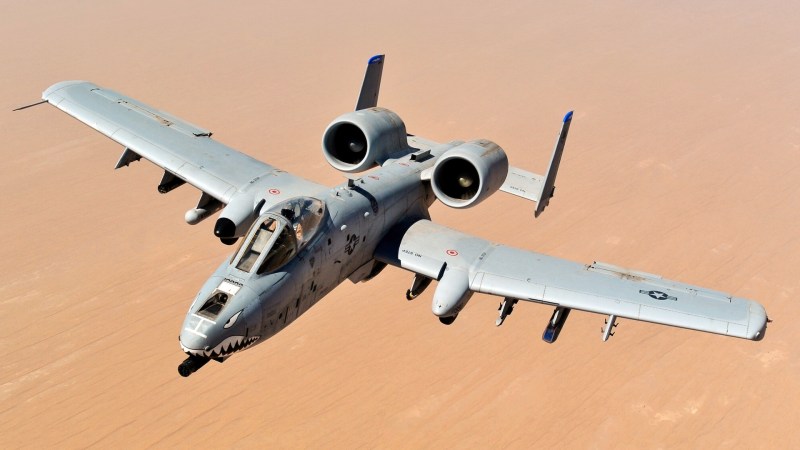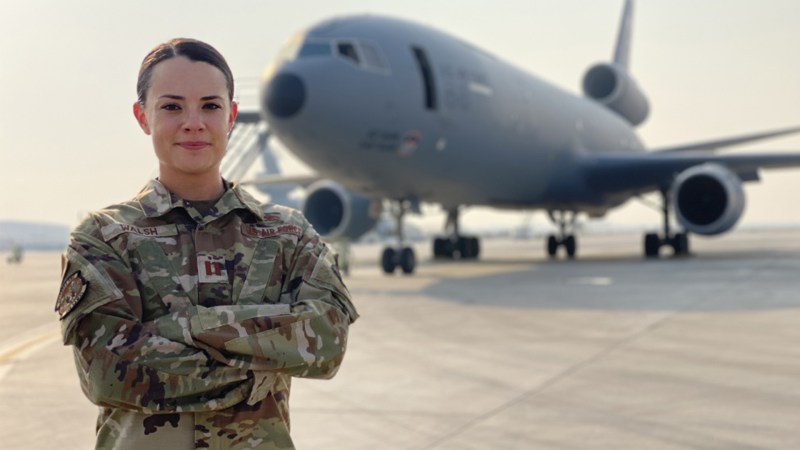After years of uncertainty, the Air Force has finally decided to add two new light attack aircraft to its inventory.
The service on Thursday released final requests for proposal for Textron Aviation’s AT-6 Wolverine and Sierra Nevada Corporation/Embraer Defense & Security’s A-29 Super Tucano.
According to Friday announcement, the Air Force plans on purchasing “two or three” AT-6 and A-29 airframes for Air Combat Command at Nellis Air Force Base in Nevada and Air Force Special Operations Command at Hurlburt Field in Florida, respectively. The final contracts for the aircraft should arrive by early 2020, according to the statement.
“Over the last two years, I watched as the Air Force experimented with light attack aircraft to discover alternate, cost-effective options to deliver airpower and build partner capacity around the globe,” Secretary of the Air Force Barbara Barrett said in the statement. “I look forward to this next phase.”

An AT-6 Wolverine, left, and A-29 Super Tucano, right, fly over White Sands Missile Range during the OA-X light attack aircraft experiment in July 2017(U.S. Air Force/Ethan D. Wagner)
The Air Force has explored acquiring new light attack aircraft alongside the Navy and Marine Corps since 2017 through its experimental OA-X, or “Observation, Attack, concept,” program designed to identify light attack aircraft for non-traditional intelligence, surveillance, and reconnaissance (ISR) functions and, potentially, close air support for ground forces.
And both aircraft pack a wallop. The A-29 comes equipped with two internal .50-cal machine guns with space for additional underwing armaments like 20mm gun pods or MK-81 and Mk 82 bombs, according to Embraer; by comparison, Textron boasts, the Wolverine is “the first fixed-wing aircraft to employ 2.75″ laser-guided rockets successfully” and uses an adaptable system to carry all manner of ordnance.
But while the Air Force’s announcement marks a major milestone for the service’s beleaguered effort, don’t expect to see two aircraft bringing the pain to enemy positions anytime soon. As Defense News notes, the missions and basing of each airframe are primarily focused on training international partners like, say, the Afghan Air Force personnel who have been flying the A-29 since 2016.
Indeed, the AT-6s at ACC intended for the “continued testing and development of operational tactics and standards for exportable, tactical networks that improve interoperability with international partners,”according to the Air Force statement, while AFSOC’s A-29s will be used to “develop an instructor pilot program for the Combat Aviation Advisory mission, to meet increased partner nation requests for light attack assistance.”
“Our focus is on how a light attack aircraft can help our allies and partners as they confront violent extremism and conduct operations within their borders,” Air Force Chief of Staff Gen. David L. Goldfein said in a statement. “Continuing this experiment, using the authorities Congress has provided, gives us the opportunity to put a small number of aircraft through the paces and work with partner nations on ways in which smaller, affordable aircraft like these can support their air forces.”
An A-29 Super Tucano releases ordnance over White Sands Missile Range during the OA-X light attack aircraft experiment in July 2017
(U.S. Air Force/Ethan D. Wagner)

But this doesn’t mean that it’s only U.S. partner forces will benefit from rocking the AT-6 or A-29 downrange. As Task & Purpose reported in 2018, the goal of OA-X was to test relatively inexpensive, propeller-driven aircraft to conduct ISR and ground attack missions in relatively uncontested environments in order to free up more advanced aircraft can deal with more hardened targets.
When it comes to close air support missions, that means less strain on already-overstretched airframes like the A-10 Thunderbolt II. Indeed, the OA-X experiment was initially conceived of in 2016 as a testing ground for a potential Warthog replacement after the Air Force tried to push its aging fleet of flying gattling guns into an early retirement.
Since then, the Air Force’s Warthog fleet has received a new lease of life through both the conclusion of an expansive decade-long re-winging effort and the raft of new upgrades coming to the airframe through the Common Fleet Initiative (CFI) the service initiated in 2018. But while the AT-6 and A-29 may no longer pose a threat of replacing the beloved Warthog, they can almost certainly augment the fleet by freeing the A-10 up for other missions and, in turn, increasing readiness.
This is just as OA-X intended — and, with any luck, the incorporation of the two new light attack aircraft may just help keep the A-10 BRRRTing in the free world for at least another decade.

